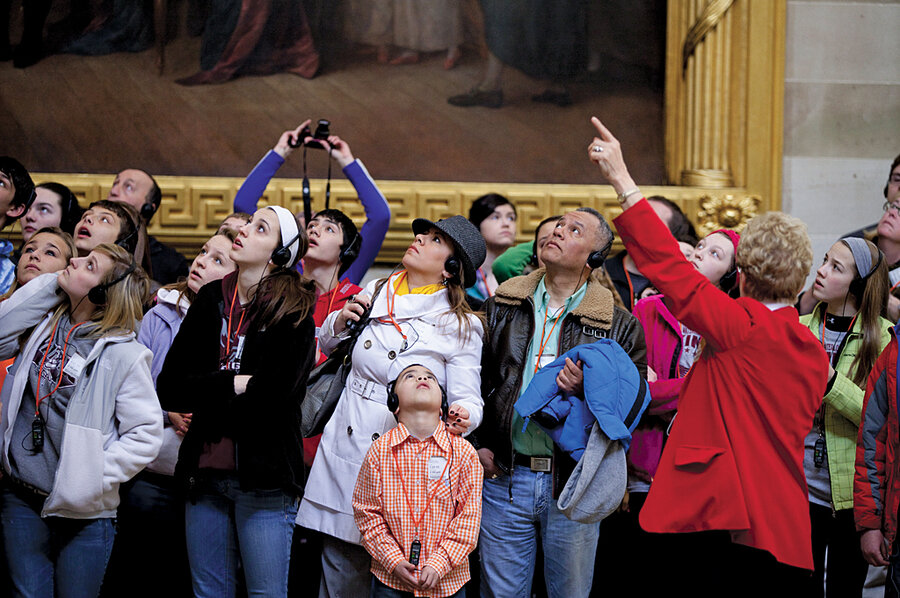Why we're hard-wired for best practices
Loading...
Let’s talk “best practices.” That’s the term for emulating success, following the leader, wanting to be like Mike (Jordan) or any other superstar at basketball, nuclear physics, ballroom dancing, summiting Everest. Best practices drive progress. Scientists, even before Isaac Newton pointed it out, have always stood on the shoulders of predecessors. Painters assimilate the best techniques of earlier masters. So do jazz musicians. Good software gets better when it is added to.
In a Monitor cover story, we look at the best practices of Washington dealmakers. It is commonplace today to pine for a golden age of centrism and moderation, a time when compromisers didn’t face fierce primary challenges if they deviated from orthodoxy. Maybe those times once existed; maybe not (see page 31). In any case, business gets done in 2013 Washington because a handful of dealmakers act as interlocutors between often hostile ideological camps.
Dealmakers may hail from a tea party conservative base or be backed by netroots liberals. One may be a Tidewater Republican, another a Brooklyn Democrat. Regardless of political coloration, dealmakers, as you’ll see in the profiles by David Grant and Gail Russell Chaddock, know how to navigate among standing firm, compromising, and capitulating. That makes them rare birds worth studying.
* * *
Here’s another category of best practices that might interest you. Barbara Mills, an archaeologist at the University of Arizona, studies pottery in the American Southwest, which has been studied by her predecessors and peers for more than a century. Millions of pre-Columbian artifacts are warehoused at universities and museums. For a recent project, Professor Mills and her colleagues compiled a database of 4.3 million artifacts from more than 700 sites, noting each item's the stylistic pattern, location, and other details. Then they ran their computer programs.
What they found is an interesting example of the human quest for best practices. Across daunting distance (more than 200 miles in some instances in a culture that traveled only by foot), pottery patterns were virtually identical. Even small changes year to year were reflected in these isolated communities.
This was more than evidence of trade. Geographi-cally separate people were tuning into each other. They cared about the latest iteration of pottery style – perhaps for religious reasons, perhaps simply to belong to something bigger than their own community. They wanted to be like-minded. They were, in essence, participating in slow-motion social networks.
“People in these cultures do it over and over again,” says Mills. “It’s not just something you see in one rare item. There’s evidence of continuous interaction.”
What she and her colleagues saw through their Big Data crunch was in some senses not surprising: Parisian fashion,
Renaissance perspective, American realism, South Korean “Gangnam style” – catchy ideas get transmitted across vast distances in any age. Sure, instantaneous communications speed the process. But people are so eager to adopt best practices and align their thinking with others that they make it a priority.
When a good idea catches on, standards rise everywhere.
John Yemma is editor of the Monitor.








